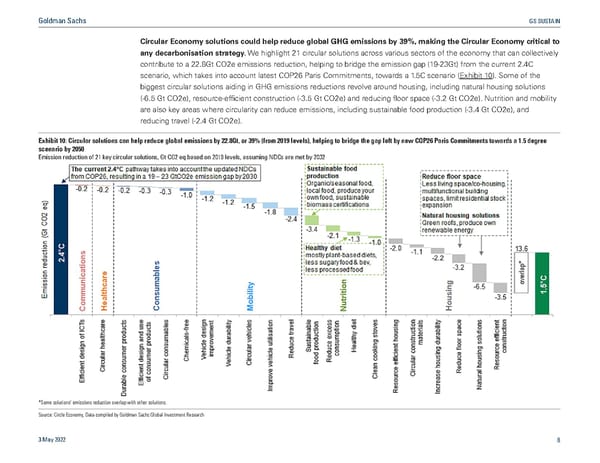Goldman Sachs GS SUSTAIN Circular Economy solutions could help reduce global GHG emissions by 39%, making the Circular Economy critical to any decarbonisation strategy. We highlight 21 circular solutions across various sectors of the economy that can collectively contribute to a 22.8Gt CO2e emissions reduction, helping to bridge the emission gap (19-23Gt) from the current 2.4C scenario, which takes into account latest COP26 Paris Commitments, towards a 1.5C scenario (Exhibit 10). Some of the biggest circular solutions aiding in GHG emissions reductions revolve around housing, including natural housing solutions (-6.5 Gt CO2e), resource-efficient construction (-3.5 Gt CO2e) and reducing floor space (-3.2 Gt CO2e). Nutrition and mobility are also key areas where circularity can reduce emissions, including sustainable food production (-3.4 Gt CO2e), and reducing travel (-2.4 Gt CO2e). Exhibit 10: Circular solutions can help reduce global emissions by 22.8Gt, or 39% (from 2019 levels), helping to bridge the gap left by new COP26 Paris Commitments towards a 1.5 degree scenario by 2050 Emission reduction of 21 key circular solutions, Gt CO2 eq based on 2019 levels, assuming NDCs are met by 2032 *Some solutions emissions reduction overlap with other solutions. Source: Circle Economy, Data compiled by Goldman Sachs Global Investment Research 3 May 2022 8
 GS SUSTAIN: Circular Economy Report Page 8 Page 10
GS SUSTAIN: Circular Economy Report Page 8 Page 10